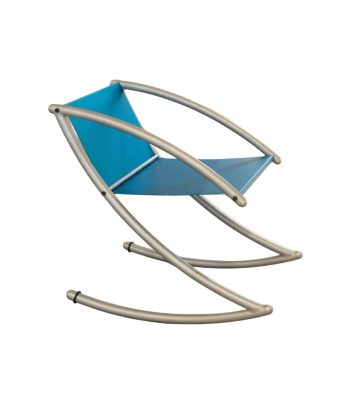Gruppe B.R.A.N.D.
In the spirit of the aforementioned developments, three autodidactic designers, all of whom had experience with metal, joined forces in Vienna in 1983 to form the B.R.A.N.D. group. Boris Brochardt, Mathis Esterhazy (who left the group at the beginning of 1986) and Rudolf Weber produced metal objects that were “intended to communicate” as unique series, because the handcrafted production process deliberately focused on the uniqueness of each workpiece. Under the title “Raumdezvous” (“Spatial Encounters”), space-consuming furniture objects of breathtaking lightness and elegance are created. The exhibition “Verspannungen” (“Tensions”), shown in 1985 in the rooms of the Section N design gallery, attracted national and international attention and made the B.R.A.N.D. group into celebrated - albeit controversially discussed - representatives of the Viennese design avant-garde. (The Vitra Design Museum purchases three pieces of furniture for the Vitra Design Collection)
In 1987, with the "Cosmo" furniture system, the B.R.A.N.D. group presents a formally calm and stringent concept which, based on a clear design idea, leads to a whole program of convincing designs. Once again recognizing the signs of the times, the group turned towards conventional serial production processes. But in-house production and distribution are economically risky and ultimately lead to failure. In 1989, the design of the Black Market record store became the last major design challenge for the B.R.A.N.D. group.
Black Market
In 1986, Alexander Hirschenhauser initiated a new form of disco experience with the Monday event "Soul Seduction" in Vienna's Volksgarten, which anticipated later clubbing and became a trendy meeting place for years. Three years later, Hirschenhauser launched the Black Market, a new business idea that made it possible to combine previously separate consumer experiences: In the venue, one could buy not only music but also clothing, or even use the store simply as a café or bar. (Later, Soul Seduction Music Distribution, a major player in the successful Austrian electronic music scene of the 1990s, joined the company.)
The logo design for Black Market was provided by Gerwald Rockenschaub. The B.R.A.N.D. group was entrusted with the complete interior design of the business premises, executing the entire design within the "Cosmo" design concept, but with new and distinctive products. The overall impression is determined by the use of steel tubing bent and welded at specific radii. The material concept is complemented by colored leather, plywood panels, and brushed or perforated aluminum sheets. Overall, the result is a consistent material and design language that characterizes and makes the restaurant, which will close in January 2008, unforgettable.
